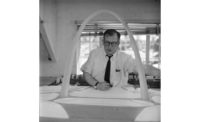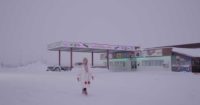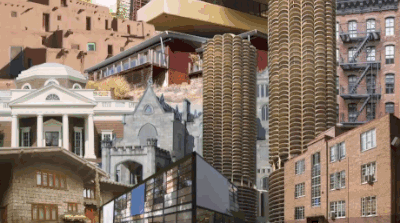When Kenya’s Dadaab refugee camp opened in 1992, it was intended to temporarily house 90,000 Somalis fleeing conflict. As of 2016, nearly half a million people live in the camp—including some who have been there more than two decades. That unintended endurance is not an outlier; similar camps have become permanent national fixtures around the world. “The crisis is getting longer for more people,” said Saskia Blume, a UNICEF child protection specialist focusing on migration, at an event hosted by AIANY at the Center for Architecture last Tuesday. “We're not talking about a temporary solution. We're talking about city-like camps where people spend generations and children are born.”
Blume was part of the discussion “We Are All Neighbors: Refugees and the Architecture of Resettlement,” which addressed how to confront the increasingly urgent crisis of refugee housing and community building. Blume was joined by Brandon Fuller, chairperson of Refugee Cities and deputy director of NYU’s Marron Institute of Urban Management, as well as architect Esin Pektas, who is working on refugee projects in her native Turkey. Sean Anderson, associate curator in the Museum of Modern Art’s Department of Architecture and Design, served as moderator.
Blume began with a macro view of the conditions faced by many of the world’s displaced peoples, noting that 58 percent of the world’s refugees live in cities, and 51 percent of all refugees are children under the age of 18. Proportionally, Lebanon has the most refugees with 183 per every 1,000 inhabitants. (The United States has a ratio of one per 1,000.) Camp life typically strips refugees of basic rights, robbing them of the possibility to live and work humanely. “The recognition has been in the humanitarian world for a long time that camps are not ideal,” Blume said. “We need to think more about how to reach those that are living in urban areas.”
Fuller shared one way to do that is through a new model: refugee cities. The concept springs from the work of political scientist Alexander Betts and economist Paul Collier. In 2015, they visited the Zatari camp in Jordan. About a 15-minute drive away was an underutilized Special Economic Zone (SEZ): the King Hussein bin Talal Development Area. At the time, it employed 10,000 people, but its capacity was closer to 100,000. Not enough Jordanians worked there to justify investment, but thousands of Syrian refugees, many of them skilled, were staying in the nearby camp with no right to work. Betts and Collier pitched the idea of creating employment for the refugees in the SEZ. In exchange for some international concessions, Jordan agreed and has begun issuing 200,000 work permits to the Syrians. The hope is to integrate these displaced into the workforce, which will lead to greater investment and, hopefully, lead to the establishment of a new, more humane living situation.
“We're moving from thinking about camps as temporary places for palliative care [and] humanitarian aid to thinking about city-scale projects where … there's also a development piece,” Fuller said.
Pektas spoke to that idea by sharing two projects aimed at improving conditions for refugees in Turkey. One of them is already complete: a center called We Are All Neighbors provides classes, job training, and meeting space for refugees in Urfa, near the border with Syria. The facility is integrated into its neighborhood and open to local residents, who use the center to hone or learn new skills, side by side with Urfa’s refugee population.
The second project, currently in development, is a similar center in Van that will be built entirely by women from mountainous regions who are experienced beekeepers—a fact that allowed them to help plan the center. “When I did the design with squares and rectangles, thinking it was simple, they just didn't get it,” Pektas said. But taking cues from the women’s experience, the architect re-framed her perspective: “They look at honeycombs all the time, so put everything in honeycomb shapes!” With that, she said, everything clicked; “We were speaking the same language.”
Ultimately, the panelists agreed: A spirit of cooperation is what’s needed to improve the day-to-day conditions of refugees. Time will tell if it will become the norm, but the potential solutions they presented offer a glimpse into a more humane—and hopeful—future for the world’s displaced people.










Post a comment to this article
Report Abusive Comment